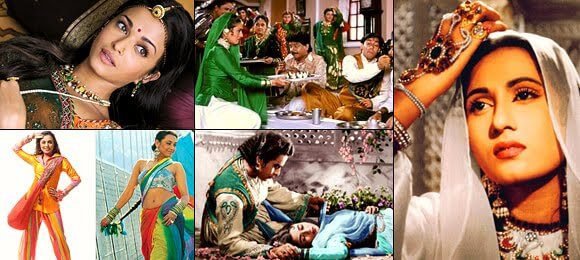Bollywood music is more than just a soundtrack to films; it is a significant cultural force that has shaped and reflected the dynamics of Indian society. Over the decades, Bollywood music has played a crucial role in influencing cultural trends, social norms, and collective identity. This article explores the multifaceted impact of Bollywood music on Indian society, examining its role in entertainment, social movements, and everyday life.
The Evolution of Bollywood Music
**1. From Early Melodies to Modern Hits
Overview: Bollywood music has evolved dramatically from its early days. The classic melodies of the 1950s and 1960s have given way to contemporary sounds influenced by global trends. This evolution reflects changes in Indian society and the film industry.

Significance:
- Historical Reflection: Early Bollywood music often mirrored the social and political climate of its time, addressing themes of nationalism, romance, and social justice.
- Contemporary Trends: Modern Bollywood music incorporates a variety of genres, including electronic, hip-hop, and fusion, showcasing the global influence on Indian music.
**2. Influential Music Composers and Singers
Overview: Notable composers and singers have left an indelible mark on Bollywood music, shaping its direction and style.
Significance:
- Pioneers: Composers like S.D. Burman and R.D. Burman introduced innovative sounds that became iconic.
- Modern Icons: Contemporary figures like A.R. Rahman and Pritam have pushed the boundaries of Bollywood music, blending traditional and modern elements.
Bollywood Music and Cultural Trends
**1. Shaping Fashion and Dance
Overview: Bollywood music is closely tied to fashion and dance trends. Iconic songs often set the stage for new fashion styles and dance moves.
Significance:
- Fashion Influence: Popular songs frequently lead to trends in clothing and accessories, influencing what people wear and how they express their personal style.
- Dance Trends: Dance routines from Bollywood films become viral, inspiring new dance styles and choreography.
Examples:
- “Mera Joota Hai Japani” from Shree 420 – Influenced fashion trends in the 1950s.
- “Chaiyya Chaiyya” from Dil Se – Sparked a wave of energetic dance routines and attire.
**2. Reflecting and Shaping Social Norms
Overview: Bollywood music reflects societal values and changes, addressing issues such as love, patriotism, and social justice.
Significance:
- Social Commentary: Songs often tackle social issues, from gender roles to caste dynamics, influencing public perception and sparking discussion.
- Changing Norms: Music reflects and sometimes drives shifts in social norms, such as evolving attitudes towards relationships and personal freedom.
Examples:
- “Ae Mere Watan Ke Logon” – A patriotic song that resonated during periods of national crisis.
- “Tamma Tamma Loge” – A song that addressed themes of romance and desire, reflecting changing attitudes in the 1990s.
Bollywood Music and Social Movements
**1. Music as a Tool for Social Change
Overview: Bollywood music has been used to support social movements and causes, from environmental awareness to women’s rights.
Significance:
- Advocacy: Songs and performances often support social and political causes, raising awareness and fostering community action.
- Empowerment: Music can empower marginalized groups, providing a platform for voices that might otherwise be unheard.
Examples:
- “Mile Sur Mera Tumhara” – A song promoting national integration and unity.
- “Bharat Humko Jaan Se Pyara Hai” – A song advocating patriotism and national pride.
**2. Bollywood Music and Youth Culture
Overview: Bollywood music plays a significant role in shaping the tastes and attitudes of the younger generation.
Significance:
- Youth Identity: The music resonates with young audiences, influencing their identity and lifestyle choices.
- Cultural Consumption: Young people often use Bollywood music as a means of cultural expression and social bonding.
Examples:
- “Kala Chashma” from Baar Baar Dekho – A hit song that became a favorite among the youth for its catchy beat and danceability.
- “Kar Gayi Chull” from Kapoor & Sons – A song that gained popularity for its modern sound and youthful appeal.
Bollywood Music and Daily Life
**1. Celebrations and Festivals
Overview: Bollywood music is an integral part of Indian celebrations and festivals, adding to the festive atmosphere and cultural experience.
Significance:
- Festive Vibes: Songs from Bollywood films are played at weddings, festivals, and other celebrations, enhancing the joyous atmosphere.
- Cultural Rituals: Music often accompanies traditional rituals and ceremonies, adding a contemporary touch to traditional practices.
Examples:
- “Mehndi Hai Rachnewali” from Lagaan – A popular song played at weddings and traditional ceremonies.
- “Tujh Mein Rab Dikhta Hai” from Rab Ne Bana Di Jodi – Frequently played during festive occasions.
**2. Everyday Life and Entertainment
Overview: Bollywood music is a staple in everyday entertainment, from radio and television to personal playlists.
Significance:
- Accessibility: Bollywood music is widely accessible, with numerous platforms for listening and enjoying it in daily life.
- Personal Enjoyment: People incorporate Bollywood songs into their daily routines, from exercise to relaxation.
Examples:
- Music Streaming Services: Platforms like Spotify and Apple Music offer curated Bollywood playlists for various moods and activities.
- Radio Stations: Bollywood music remains a popular choice on Indian radio stations, providing entertainment and connection to listeners.
Conclusion
Bollywood music has a profound and multifaceted impact on Indian society. From shaping cultural trends and social norms to influencing daily life and social movements, its influence is pervasive and enduring. The dynamic nature of Bollywood music reflects the changing landscape of Indian society and continues to play a significant role in shaping collective identity and cultural expression.
As Bollywood music evolves and adapts to global trends, its role in Indian society remains vital, bridging traditional and contemporary elements and resonating with audiences across generations.

